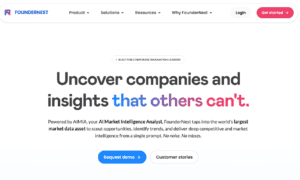Competition in digital advertising is fiercer than ever. With global digital ad spend expected to cross $750 billion by 2025, brands can no longer afford to ignore what their rivals are doing. Monitoring competitor ads helps you uncover winning strategies, anticipate market shifts, and optimize campaigns faster than those who operate in the dark.
As advertising becomes more data-driven, monitoring is no longer just about copying creative ideas, it’s about understanding your competitors’ messaging, targeting, and budget allocation so you can make smarter moves. The good news? There are more tools and structured approaches available than ever before.
Why Competitor Ad Monitoring Matters
At its core, monitoring competitor ads is about making better decisions with the information you already have access to. By analyzing ads from direct competitors, category leaders, or even adjacent brands, you can:
- Identify new opportunities – spot channels or formats competitors are testing before they become mainstream.
- Improve campaign efficiency – avoid wasting spend on messaging or targeting that already failed for others.
- Benchmark your performance – see where you stand in terms of reach, share of voice, and creative freshness.
- Strengthen your offers – discover promotions or hooks that resonate with audiences and adapt them to your brand’s positioning.
The payoff is significant. According to eMarketer, retail media will account for nearly 20% of total digital ad spend by 2026, meaning the brands that actively monitor marketplace ads and sponsored placements will be better positioned to capture conversions in high-intent environments.
Practical Ways to Monitor Competitor Ads
1. Explore Ad Libraries and Transparency Tools
Most major platforms now provide transparency libraries that make competitive monitoring easier:
- Meta Ad Library – shows active and past campaigns, creative variations, and spend ranges for certain categories.
- Google Ads Transparency Center – lets you search by advertiser to see which formats, keywords, and geographies they’re targeting.
- TikTok Commercial Content Library – highlights active campaigns and provides visibility into ad formats that drive engagement.
- Amazon and Walmart ad libraries – useful for retail media, especially as marketplace advertising continues its rapid growth.
These tools give you a baseline understanding of where competitors are focusing their spend, which creative styles they favor, and how frequently they update campaigns.
2. Use Auction Insights for Paid Search
Within Google Ads, the Auction Insights report is one of the most direct ways to track competitor activity. It provides data on:
- Impression share – how often your ads show compared to competitors.
- Overlap rate – how often your ads and a competitor’s ads appear in the same auction.
- Position above rate – how often a competitor outranks you in the same search.
By analyzing these metrics, you can see whether a rival is becoming more aggressive with bids or gaining traction with higher-quality ads. For instance, if their position above rate rises significantly, it may be time to review your ad relevance, landing page quality, and overall bidding strategy.
3. Track Retail Media and Marketplace Ads
Retail media is one of the fastest-growing segments of digital advertising. Competitors that secure prominent placements on Amazon, Walmart, or Instacart not only win visibility but also set customer expectations around pricing, promotions, and bundles.
Monitoring competitor ads in retail media means paying attention to:
- Which products they prioritize.
- How frequently they rotate promotions.
- Whether they are testing newer ad formats like video or interactive placements.
This insight helps you plan smarter retail strategies and avoid being caught off guard by sudden shifts in category focus.
4. Watch Creative Trends Across Social and Video
Ad performance is increasingly influenced by creative quality. Short-form video, for example, is dominating platforms like TikTok, Instagram Reels, and YouTube Shorts. In fact, studies show that short videos under 15 seconds drive significantly higher engagement rates compared to longer content.
By monitoring competitor creatives, you can pick up on:
- Hooks (first 3–5 seconds that capture attention).
- Messaging frameworks (discounts, free shipping, guarantees).
- Formats (carousel, UGC-style video, static images).
- Calls-to-action and where they appear in the video.
Cataloging these patterns over time will help you spot industry shifts early and adapt before they become mainstream.
Building a Repeatable Monitoring Process
Monitoring competitor ads effectively requires consistency. Here’s a simple framework to follow:
- Define your competitive set – include direct rivals, adjacent brands, and category leaders.
- Set a monitoring cadence – weekly reviews of ad libraries, monthly checks of Auction Insights, and quarterly deep dives into creative patterns.
- Centralize your findings – store screenshots, campaign notes, and trend observations in a shared workspace (Notion, Trello, or Google Sheets).
- Leverage technology – Instead of doing everything manually, many brands now use Ad intelligence platforms to automate data collection, track competitor spend trends, and identify new creative launches.
- Act on the insights – every observation should feed into a test or optimization. For example, if a competitor launches a free-trial campaign, test a variation of your own with a differentiated value-add.
Turning Insights into Competitive Advantage
The value of monitoring competitor ads lies in how you apply the insights:
- Creative testing – borrow structural elements that work (like storytelling hooks or strong CTAs) but make them unique to your brand.
- Offer positioning – if competitors emphasize price cuts, consider positioning around quality, trust, or exclusivity.
- Channel strategy – if you notice increased competitor activity in TikTok or CTV, prepare to allocate budget there to avoid falling behind.
- Customer journey optimization – use landing page reviews to refine your own conversion funnel, from copy to checkout flow.
Looking Ahead
Competitor ad monitoring will only grow in importance as advertising becomes more competitive and fragmented. Automation and AI will make it easier to track thousands of ads across channels in real time, but human judgment will still be needed to turn raw data into strategy.
The winners in the coming years will be the brands that:
- Treat competitor monitoring as an ongoing process, not a one-time project.
- Use transparency tools and Ad intelligence platforms to scale their efforts.
- Translate competitor insights into actionable tests that fuel growth.
With the right approach, monitoring competitor ads isn’t just about keeping up—it’s about staying ahead.
Author bio: Jay is an SEO Specialist with five years of experience specializing in digital marketing, HTML, keyword optimization, meta descriptions, and Google Analytics. A proven track record of executing high-impact campaigns to enhance the online presence of emerging brands. Adept at collaborating with cross-functional teams and clients to refine content strategy. Currently working with Pulse of Strategy. For inquiries, you can reach him at JayJaangid@gmail.com.
LinkedIn | Instagram | Twitter
Read More From Techbullion



































